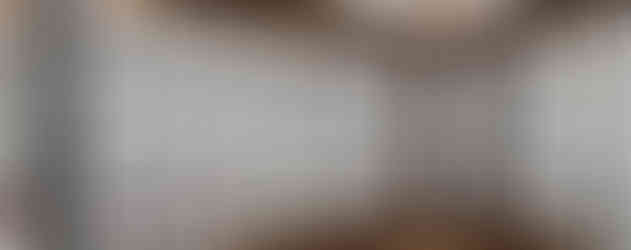Peak inside the Gucci Vault
- Polo Lifestyles 2020

- Jul 29, 2021
- 2 min read
Marking another major milestone of its 100th anniversary celebration, Gucci opened the new home of its archive collections on July 1, 2021.
The archive is housed at Palazzo Settimanni, a historic 15th-century villa which was built by Florentine aristocrats in the Santo Spirito neighborhood, where artists and artisans had their workshops along the banks of the Arno. It has gone through many changes and changes of ownership over the centuries, with different owners completely changing its interior character through renovations and additions.
Gucci acquired the building in 1953, using it variously through the decades to house its first Florentine factory, workshops, and a showroom. Under Alessandro Michele’s creative direction, the palazzo has recently been restored to its historic glory – though not without some visionary contemporary additions – creating a dialogue between past and present.
“My task was to bring many objects back home, virtually helping them return to the family,” said Michele. "To a place that ostensibly preserves the past, but which is actually a bridge to the contemporary. An ancient building is a living thing. Like fashion.”
Across the five floors, including the basement, all the structures accumulated in recent times have been stripped away to reveal vestiges of 19th century decorations, 18th century trompe l’oeil, late 17th century frescoes and even earlier ornamentation; all these elements have been deliberately left intact or restored to their original splendor without being moved or altered. The only significant alteration has been the removal of the canopy in the entrance hall, added in the 1990s, to let in more light and restore the central portico to its original proportions. Throughout the restoration process, Gucci maintained strong links to its home and cultural heritage of creativity, entrusting the entire process to local specialists and craftspeople.
The collections are divided up and organized by theme, from housewares or stationery to handbags and dresses. Each section allows visitors to experience how Gucci transformed through time, maintaining its signature character, while always changing to meet the moment.
“Palazzo Settimanni, now free of earlier additions, is transformed into a magical place to which I have restored a sense of porousness: you pass through it, air gets in, you can walk through it as if it were a journey,” Michele explained. “(It was important that) I restored to the Palazzo a fairy-tale aura which, for instance, allows the small entrance hall to become a gateway to a dream dimension. I envisaged it as a sort of secret place within the House, an inner sanctum from where one sets out for Gucci’s holy land.”



















代发外链 提权重点击找我;
蜘蛛池 蜘蛛池;
谷歌马甲包/ 谷歌马甲包;
谷歌霸屏 谷歌霸屏;
谷歌霸屏 谷歌霸屏
蜘蛛池 蜘蛛池
谷歌快排 谷歌快排
Google外链 Google外链
谷歌留痕 谷歌留痕
Gái Gọi…
Gái Gọi…
Dịch Vụ…
谷歌霸屏 谷歌霸屏
负面删除 负面删除
币圈推广 币圈推广
Google权重提升 Google权重提升
Google外链 Google外链
google留痕 google留痕
AV在线看 AV在线看;
自拍流出 自拍流出;
国产视频 国产视频;
日本无码 日本无码;
动漫肉番 动漫肉番;
吃瓜专区 吃瓜专区;
SM调教 SM调教;
ASMR ASMR;
国产探花 国产探花;
强奸乱伦 强奸乱伦;
代发外链 提权重点击找我;
谷歌蜘蛛池 谷歌蜘蛛池;
Fortune Tiger…
Fortune Tiger…
谷歌权重提升/ 谷歌权重提升;
谷歌seo 谷歌seo;
谷歌霸屏 谷歌霸屏
蜘蛛池 蜘蛛池
谷歌快排 谷歌快排
Google外链 Google外链
谷歌留痕 谷歌留痕
Gái Gọi…
Gái Gọi…
Dịch Vụ…
谷歌霸屏 谷歌霸屏
负面删除 负面删除
币圈推广 币圈推广
Google权重提升 Google权重提升
Google外链 Google外链
google留痕 google留痕
代发外链 提权重点击找我;
游戏推广 游戏推广;
Fortune Tiger Fortune Tiger;
Fortune Tiger Slots Fortune…
谷歌马甲包/ 谷歌马甲包;
谷歌霸屏 谷歌霸屏;
מכונות ETPU מכונות ETPU;
;ماكينات اي تي بي…
آلات إي بي بي…
ETPU maşınları ETPU maşınları;
ETPUマシン ETPUマシン;
ETPU 기계 ETPU 기계;
代发外链 提权重点击找我;
游戏推广 游戏推广;
Fortune Tiger Fortune Tiger;
Fortune Tiger Slots Fortune…
谷歌马甲包/ 谷歌马甲包;
谷歌霸屏 谷歌霸屏;
מכונות ETPU מכונות ETPU;
;ماكينات اي تي بي…
آلات إي بي بي…
ETPU maşınları ETPU maşınları;
ETPUマシン ETPUマシン;
ETPU 기계 ETPU 기계;